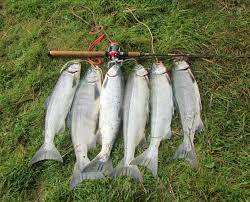Kaktovik fisherman Robert Thompson has caught salmon before, but lately he has been observing more and more of it in the area. | PxHere
Kaktovik fisherman Robert Thompson has caught salmon before, but lately he has been observing more and more of it in the area. | PxHere
Kaktovik fisherman Robert Thompson has caught salmon before, but lately he has been observing more and more of it in the area.
"In recent years, we've been catching more salmon," Thompson said. "And we've got all the species — we got king salmon here," as well as chum, sockeye and coho.
The increasing presence of Pacific salmon in the Arctic is the research theme of University of Alaska Fairbanks graduate student Elizabeth Mik'aq Lindley. The research was one of the many topics discussed by local observers and scientists during the December workshop hosted in part by the Alaska Arctic Observatory & Knowledge Hub.
While hard numbers about the change in the salmon population in the Arctic are not readily available, observations from locals are reliable data the scientists are using, Lindley's advisor Peter Westley said. One way to look at the changes in the population is through language: chum salmon and pink salmon are the species that have Inupiaq names — amaqtuq and iualugruaq respectively — while the rest of the species, such as chinook and sockeye, do not.
"The lack of names is evidence of a lack of appearance" in the past, Westley said.
http://www.thearcticsounder.com/.../2252researchers...
Original source can be found here.



 Alerts Sign-up
Alerts Sign-up